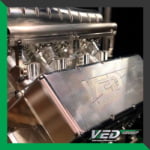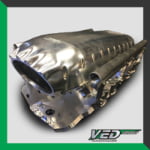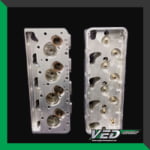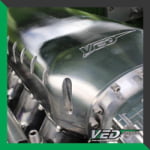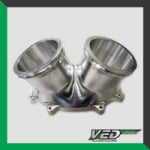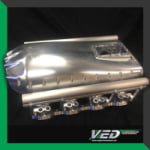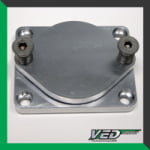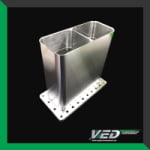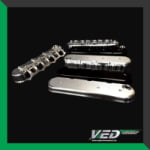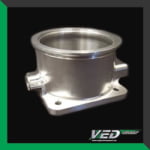Shop VED Store
- Billet Engine Blocks
- Billet Cylinder Heads
- Billet Intake Manifolds
- Billet Valve Covers
- Throttle Body & Carb Spacers
- Throttle Bodies
- Fuel Accessories
- Hat Washers
- Flame Hoops
- Apparel & Merch
VED Information
- Contact VED
- About VED
- Services
- Testimonials
- Get Featured by VED
- Privacy Policy
- Warranty, Shipping & Returns
Contact VED
Visner Engine Development, LLC
8603 Savannah Dr
Saranac, MI 48881
Phone: 616-726-6600
Fax: 616-726-6601
Contact Us
FOLLOW @VisnerEngine
for builds, info, and more



TAG US: #VisnerEngine
to get featured!
Technical Information
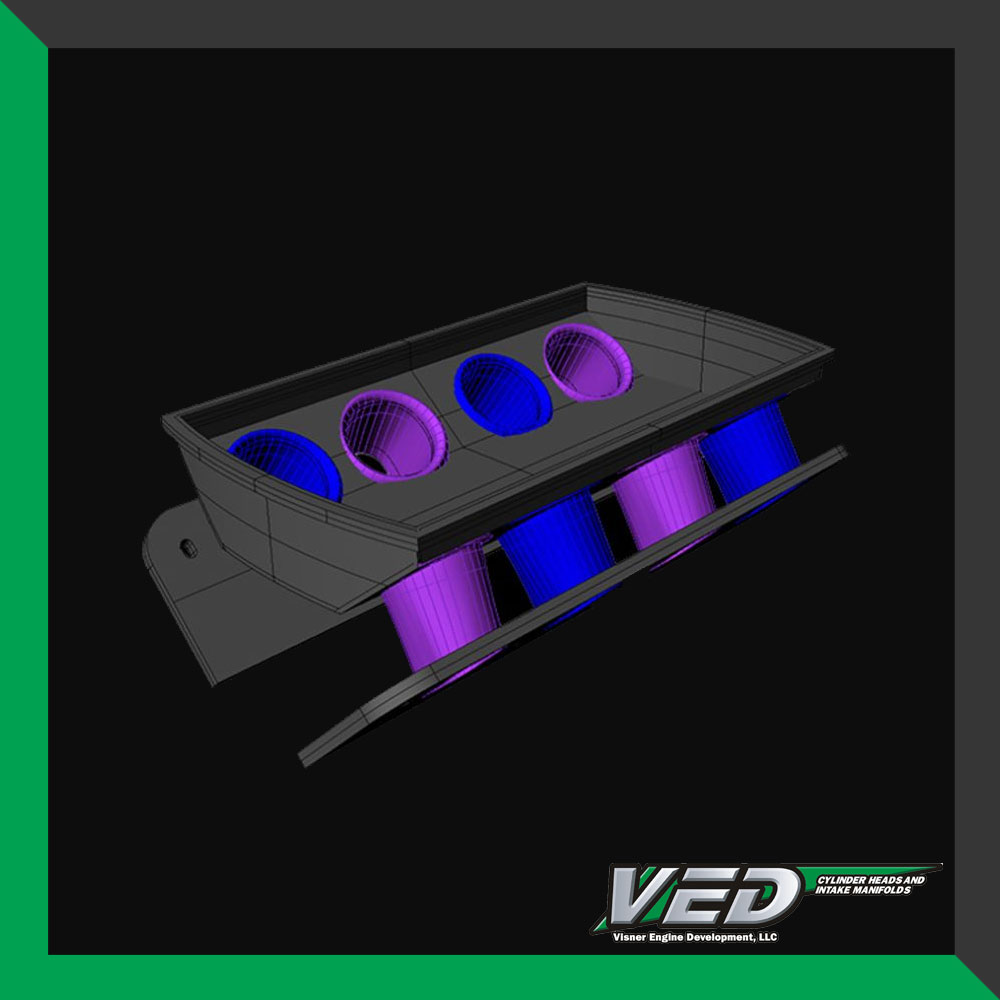 Basic Port Design
Basic Port Design
Books have been written on what we know and think we know about the volumetric side of an engine design. However, there is a lot we do not understand about engine behavior, but with continued testing and evaluation, we will continue to make power gains through improved port designs tailored to the dynamic behaviors of racing engines. Here are some basic design fundamentals we use.
The size and shape of a port is dependent on many factors like:
- RPM range
- Engine size
- Intended use
- Port trajectory angles
- Port to valve angle
- Chamber design
- Induction (carburetor, etc) size
- Exhaust system design
The cross-sectional area changes through the port are the key to advanced designs. Directional changes in airflow and the constantly changing pressure differentials from piston and camshaft position dictate the size throughout the port.
At Visner Engine we break the engine cycles down into the following actions:
- Compression
- Expansion
- Blow down
- Exhaust pumping
- Overlap
- Intake stroke
- Intake ram effect
We have developed a process to evaluate the port behavior with these actions and size the port accordingly.
The other major player in port design is tuning pressure waves. The length of the port, the port size and shape, and the amount of taper along with almost every other aspect of the engine design effects pressure wave strength and timing. This is why cylinder head designers need to stay current with all aspects of engine tuning.
It is because of pressure wave tuning an engine running at 9000 rpm (75 compression strokes per second) can fill the cylinder well over 100% with only atmospheric pressure. Volumetric efficiencies of over 120% at peak power are common on highly developed race engines.

